By March, every creature, including us, is a bit fed up with winter. When my children were younger, I would send them to school with the reminder that the first one to spot a crocus on their walk would get chocolate, and then we could all celebrate the imminent arrival of spring. They learned to look and where to look, and they got chocolate.

Two widespread—I won’t say common—traditional bulbs are crocuses and daffodils. These are well behaved, and won’t create a lot of maintenance work for gardeners. A third group of rabbit-resistant bulbs that I most emphatically do not recommend are Scillas. They are very pretty, but they also spread rampantly. They are way too much work to keep in bounds. Aside from my unfortunate flirtation with Scilla bifolia *, I have had Scilla siberica in the yard, brought in from the neighbors, most likely by a squirrel. When those started spreading, I did not wait. I dug all the Scilla siberica out. Enough said. Let’s focus on daffodils and crocuses.
Daffodils are said to be deer and rabbit resistant, and while I cannot speak to deer since we don’t have any, I can say the rabbits leave them alone. Daffodils break ground in January or February, and become obvious in February or March. Don’t worry. They don’t mind freezing nights.
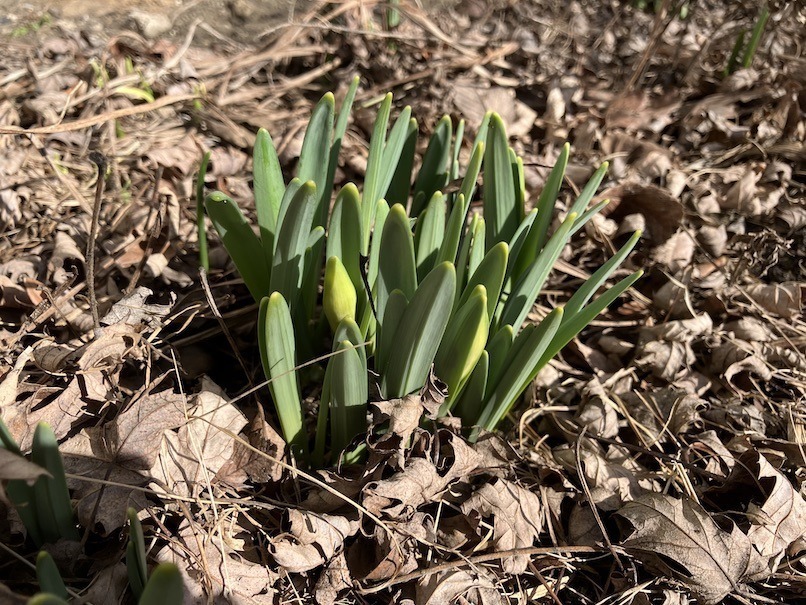
They grow rapidly if the days are above freezing.
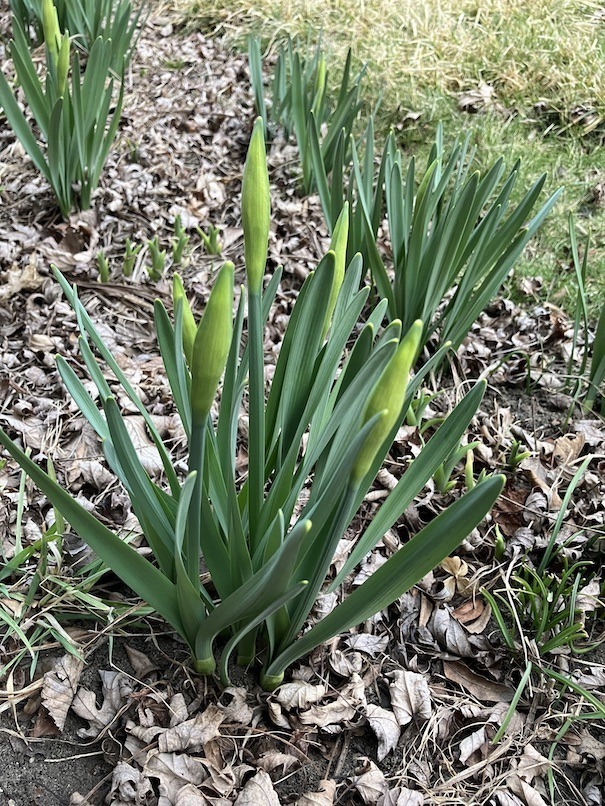
Once the flower buds elongate above the leaf tips, the buds will complete their development. I keep meaning the confirm that the buds open right after it rains; it seems that way. In this case, it is true. I checked the National Weather Service’s local data against my photographs. The first buds in this bed opened on March 10, after nearly an inch of rain over two days.
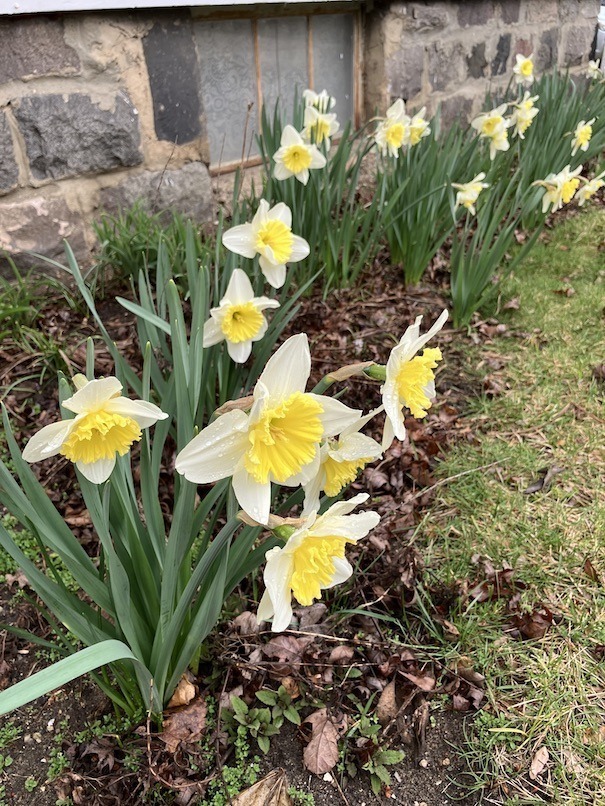
Crocuses are said to be deer and squirrel resistant. We have no deer, but our three species of squirrels do not bother them; however, while rabbits are disinclined to eat yellow or cream crocuses, they find purple crocuses edible enough. If you look carefully at the crocus foliage below, it looks mowed at the base of the flower buds. The rabbits ate their way through this patch before the flower buds or their guardian daffodils’ foliage came up. Rabbits tend to mow–they won’t pick their way among individual plants or leaves to eat just the tasty bits. Yay!
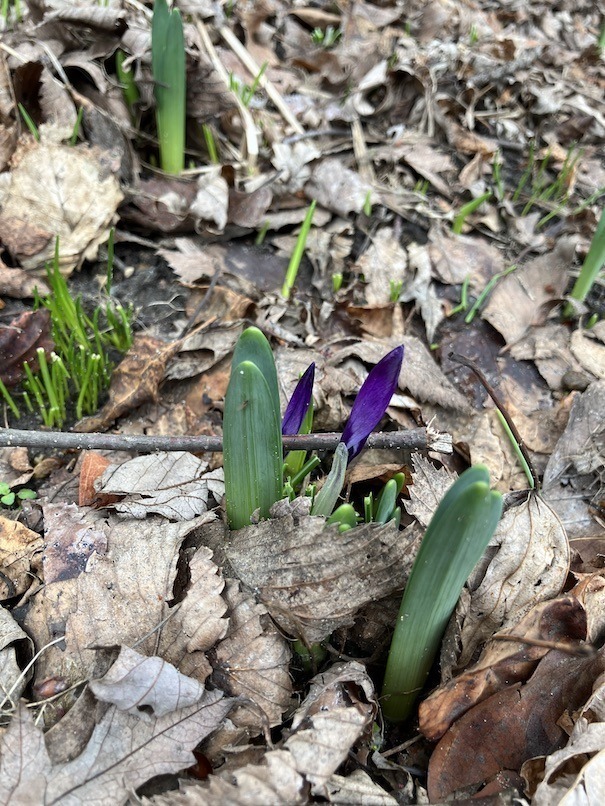
Daffodil foliage seems to deter predation. Rabbits will eat the flowers if they can do so easily.
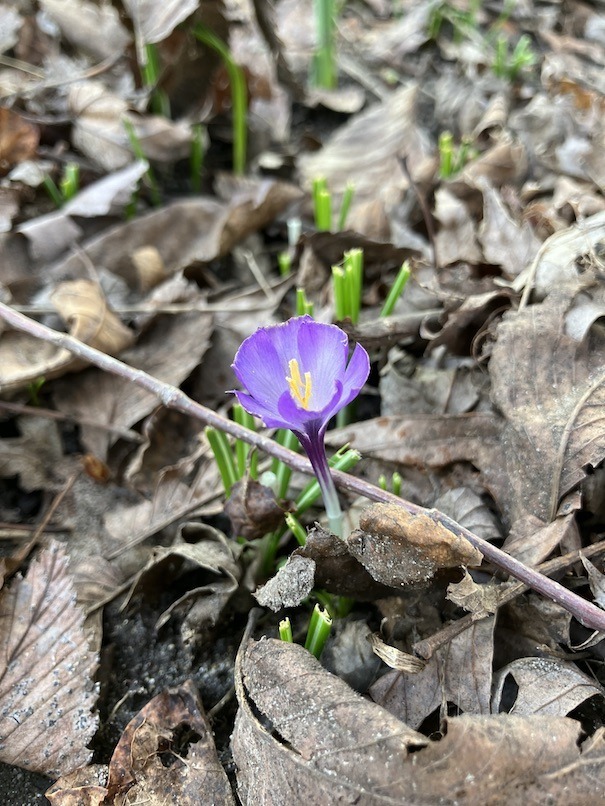
These crocuses are intermixed with a late daffodil variety, so each gets to bloom and shine on its own.
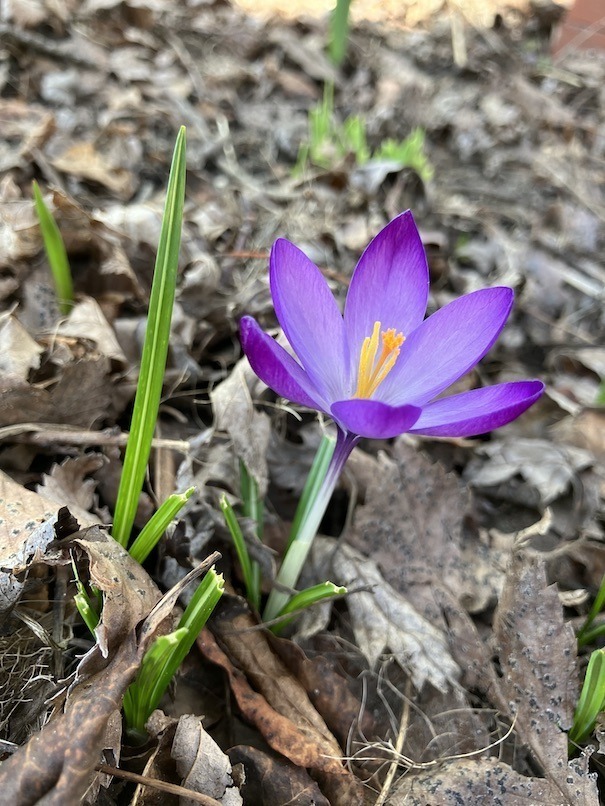
Anything that grows and blooms this early has to be resilient to keep coming back. I’ve rarely seen cold injury—leaf tips that turn brown—but frequently seen crocuses and daffodils buried in snowstorms. The most recent one was a wet, heavy storm that buried the smaller growing bulbs completely, but left the daffodils visible and bristling with some flower buds above the snow.
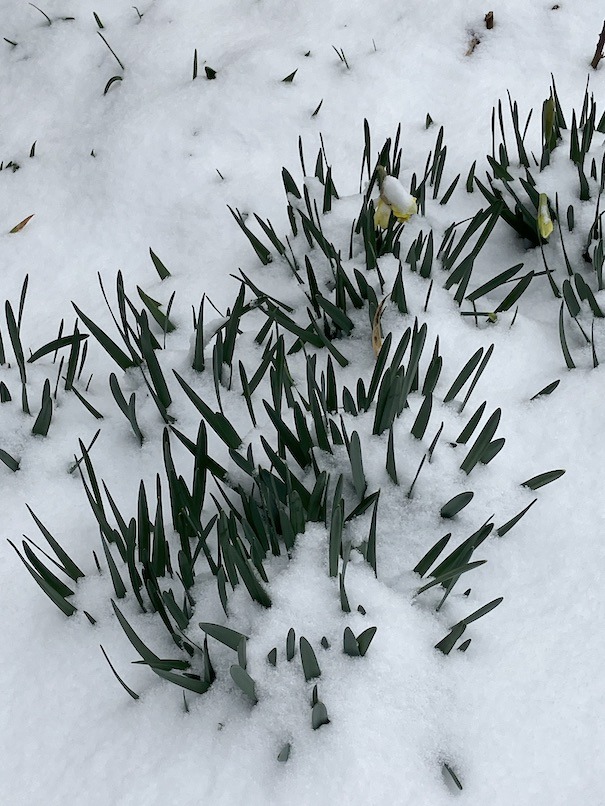
This particular snowstorm dumped 5 inches that we were not really expecting. Moisture from the Gulf of Mexico is a pain in so many ways. It may not be the last snow, either. We usually have snow the first or second week of April, but this was the winter that was mostly fall. We shall see.
* It only took an hour or so last week to dig out yet more Scilla bifolia seedlings. They have to be dug out when they are spotted. The flowers disappear quickly, making them very hard to find.